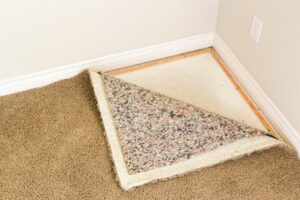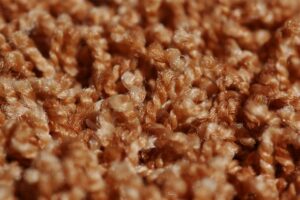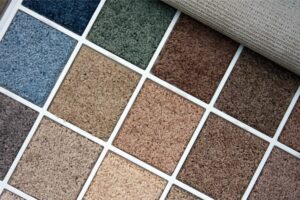10 Helpful Carpet Terms to Know

We all love the soothing touch of supremely soft carpet, helping us create calming, inviting atmospheres in the home that our families love to spend time in. When it comes to new carpet shopping, other than selecting your favorite shade, it can be hard to differentiate between carpet samples in a flooring showroom. Of course, you can always contact the Flooring 101 carpet experts when you need assistance understanding different carpet types.
We also love empowering our customers to learn more about flooring terminology so that they can make purchases and complete projects with confidence! With this goal in mind, here are ten helpful carpet terms that will help you to compare different styles when shopping for carpet:
1. Pile & Pile Height
Carpet pile refers to the surface fibers or face yarn, the plush part of the carpet we touch with our feet! Pile height is measured from the top of the primary backing to the top of the pile.
2. Backing

Carpet backing is what secures and holds the carpet in place, and can feature protective treatments. The primary backing is a fabric that the pile yarn is woven into with needles. The secondary backing is laminated to the back of the carpet to reinforce it. Today’s innovative carpet backings can improve insulation, sound absorption, comfort, wear resistance, and other performance characteristics.
3. Denier
The term denier describes the size of the yarn bundle used to make the carpet. The higher this number is, the thicker the yarn will be and the thicker the resulting carpet pile will be.
4. Density
Carpet density indicates how many strands of fiber a carpet contains, and how close each carpet fiber is at the carpet base. Many factors in the manufacturing process will determine a carpet’s density including stitch rate, yarn size, and pile height. Denser carpets are tougher and more resistant to wear.
5. Construction

Carpet construction will determine how a carpet looks, feels, and performs in the home, each with unique attributes. The three main carpet construction are:
- Cut Pile – Carpet fibers are precisely cut at the top, creating an exceptionally soft, even surface.
- Loop Pile – Uncut loops of yarn that can be uniform or varied in height, creating durable patterns and textures.
- Cut-and-Loop Pile – Carpets combines cut fibers and loops, creating engaging visuals, intricate textures, and versatile styles.
6. Broadloom
Broadloom or tufted carpet describes wide rolls of wall-to-wall carpet that are cut to size and installed over carpet cushion.
7. Carpet Tiles
Carpet tile or modular carpets are created in pre-sized shapes with backing already attached. These versatile tiles work well in both commercial and residential locations.
8. PET Carpet Fiber

Everyone knows carpet fibers like nylon, wool, and cotton, but PET stands for polyethylene terephthalate, which is the scientific way to say recycled polyester! Also available in High-Performance PET, these carpets offer excellent stain and fade resistance.
9. Polypropylene
Polypropylene carpet fiber is also more commonly called Olefin. This carpet fiber offers extreme durability and stain resistance, making it a great fit for indoor-outdoor use and high-activity areas.
10. Proprietary Carpet Fibers
When you hear proprietary fibers, this refers to engineered carpet fibers from larger carpet manufacturers that come with high performance attributes.
Make sure you contact our flooring experts or visit one of our Flooring 101 showrooms in California when you want to learn even more about carpet. We can’t wait to help shop for stunning new carpet and find the ideal style for your inspired spaces!


